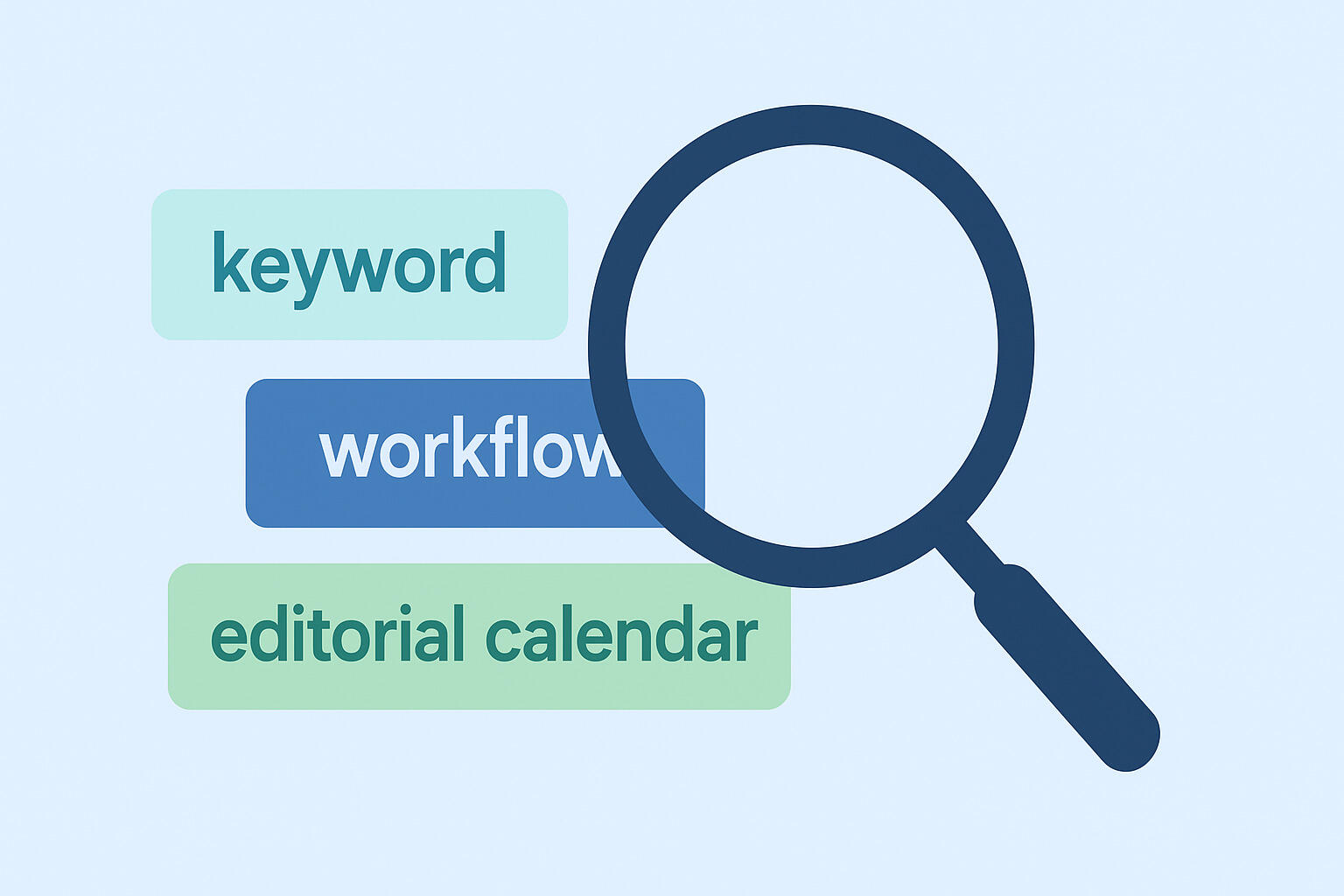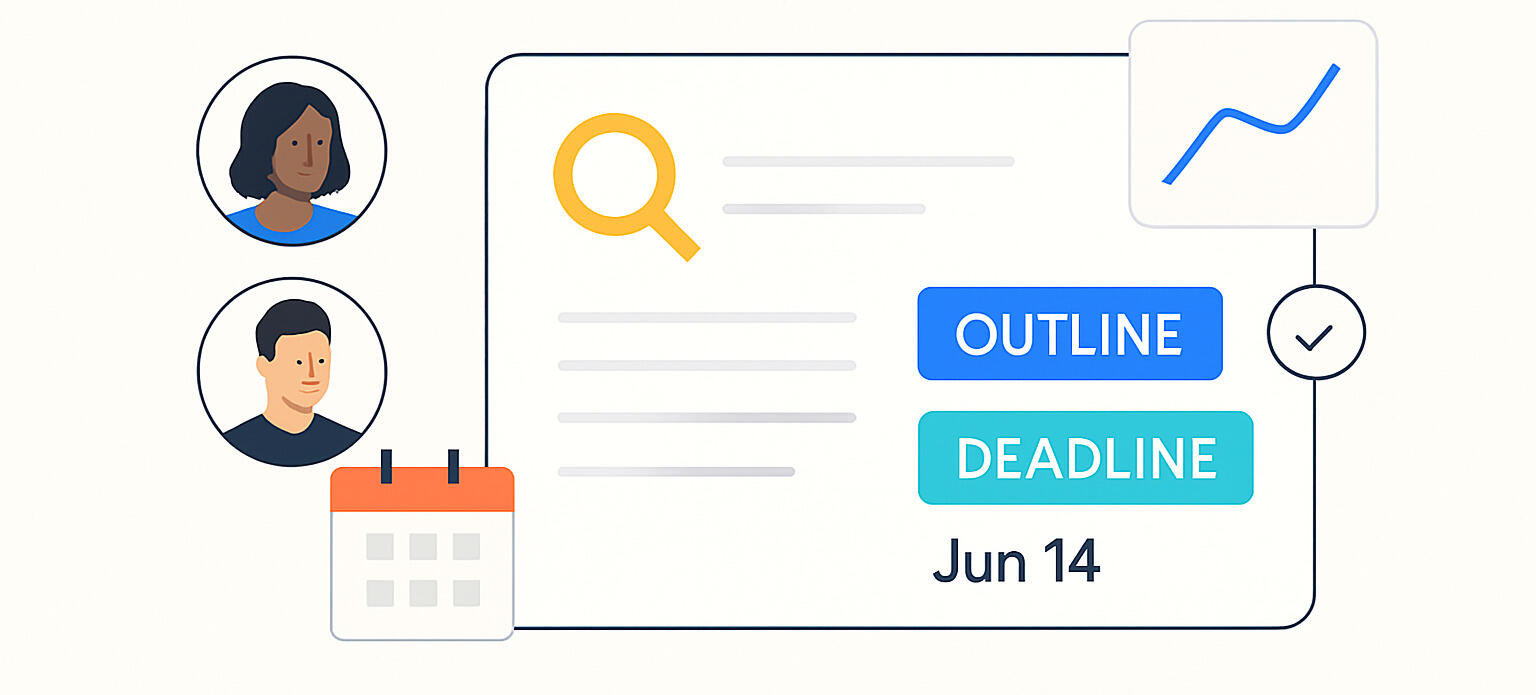What is a workflow? Guide and examples.
Efficient project management is essential for success, and workflows play an important role in achieving this. A workflow is responsible for navigating the complexities of tasks and processes, making them an important component of project success.
Whether you want to streamline your processes or improve your project management skills, this guide offers a comprehensive exploration of workflows, providing practical insights and real-life examples that bridge the gap between theory and application. Let's jump in!
Defining a workflow
The term "workflow" can be vague and open to interpretation, depending on the industry or discipline.
For example, in healthcare, a workflow could refer to the sequence of steps involved in patient admissions. It might include tasks such as patient registration, medical history documentation, initial assessments, and treatment planning. The workflow in healthcare is designed to give a systematic and efficient process for delivering patient care.
On the other hand, in graphic design, a workflow might pertain to the stages involved in creating a visual design project. This could include tasks like client brief analysis, concept development, design creation, client review, and finalization. The graphic design workflow helps with creativity, collaboration, and adherence to client specifications.
However, these two workflows, and workflows in general, have something in common. To put it simply, they are composed of a series of tasks and processes that work together to create a project timeline and move tasks from start to finish.

Breaking down a workflow
Workflows are adaptable processes that can be customized to meet different needs. This flexibility is essential in a constantly changing business environment. It allows teams to react to unforeseen challenges and evolving requirements, and customize project management processes to align with specific objectives and circumstances.
Here are the common stages that make up a workflow:
- Initiation: Initiation marks the beginning of a project and involves the definition of tasks or projects, identification of key stakeholders, and the establishment of clear objectives and goals. It sets the foundation, laying out the path that the workflow will tread. It's important to clearly define tasks or projects in this phase, and can be done by writing a project scope.
- Planning: Planning involves meticulous detailing of tasks and allocation of resources through comprising a simple project plan, defining responsibilities among team members, and crafting a comprehensive timeline or schedule. To simplify this process, consider writing effective SMART goals.
- Execution: Execution is where planned tasks come to life. It involves the seamless implementation of tasks, fostering collaboration among team members, and ensuring continuous monitoring and adjustment for optimal efficiency.
- Review: Review is the reflective stage, where completed tasks or project phases undergo evaluation. It includes writing an effective status report which involves the identification of successes and challenges, along with valuable feedback and communication with stakeholders for refinement.
- Approval: Approval signifies the green light for progression. It involves securing necessary approvals or authorizations, verifying that the work aligns with specified criteria, and formal acceptance to proceed to the next stage.
- Monitoring: Monitoring tracks ongoing progress, performance, and project milestones. It includes identifying potential issues or delays and maintaining continuous communication within the team to provide seamless workflow progression to help track measurable goals and outcomes.
- Completion: Completion marks the finalization of all tasks and deliverables. It involves thorough documentation of results and outcomes, preparing for handover or transition to the next phase or team.
- Closure: Closure is the formal end of the project or process. It involves evaluating overall success, extracting lessons learned, and archiving relevant documentation for a comprehensive project history
Benefits of using a workflow
Efficient workflows are essential in project management for optimal productivity and team collaboration. Let's explore the other key benefits of workflows:
- Improved operational efficiency: Workflows streamline processes, eliminating bottlenecks and redundancies. This optimization translates to improved operational efficiency, ensuring that tasks are executed with precision and timelines are met.
- Team alignment: Workflows serve as a common language for team members, fostering alignment and a shared understanding of project objectives. This alignment is crucial in minimizing miscommunication and maximizing collaborative efforts.
- Real-time visibility: Teams can track progress at every stage, identify potential issues promptly, and make informed decisions based on up-to-the-minute data.
- Resource allocation: Workflows provide a structured framework for allocating resources optimally, ensuring that each team member's skills are utilized effectively.
The importance of workflows in enhancing efficiency and productivity cannot be emphasized enough. Workflows provide a systematic approach to executing tasks, which reduces the likelihood of errors and delays. They create a roadmap that team members can follow, minimizing guesswork and allowing them to focus on their core responsibilities.
Workflows also promote a culture of accountability. With clearly defined processes and responsibilities, each team member understands their role in the larger context. This clarity not only reduces the possibility of misunderstandings but also enables individuals to take ownership of their tasks, driving productivity.
Many workflow tasks can be automated for increased efficiency and productivity. Automating workflow tasks, such as routine task assignments and email notifications in project management, speeds up task completion and minimizes the risk of human error. This allows teams to focus on more strategic aspects to improve efficiency and productivity.
Real-life examples of workflows
Let's now dive into tangible applications of workflows by exploring real-life examples of how they have reshaped project management in diverse industries. From the initiation phase to closure, these examples demonstrate the versatility and impact of workflows.
Customer feedback
Customer satisfaction is necessary to succeed in any business. To achieve this, organizations must have a clear and well-structured workflow for handling customer feedback.
-
Initiation:
- Involve clients in projects for strategic feedback distribution.
-
Planning and resource allocation:
- Plan the process and allocate resources for analyzing responses.
-
Execution phase:
- Implement improvements based on received feedback.
-
Review stage:
- Evaluate successes and challenges.
- Approve actionable suggestions.
-
Monitoring phase:
- Continually track customer sentiments.
-
Completion:
- Document implemented changes.
-
Closure:
- Formalize the end of the feedback iteration.
-
Overall impact:
- Makes the feedback process more manageable.
- Enhances efficiency by providing a structured approach to transforming customer insights into real improvements.
Campaign management
A well-crafted campaign management workflow is essential for successful campaigns.
-
Campaign ideation and planning:
- Begin the workflow with brainstorming ideas for the campaign and planning its details.
- Allocate resources and define responsibilities during this phase.
- Create a timeline for the entire execution of the campaign.
-
Execution phase:
- Implement marketing strategies as outlined in the planning stage.
- Foster seamless collaboration among team members during the execution.
-
Review stage:
- Evaluate campaign performance during this stage.
- Identify areas for improvement and acknowledge successful aspects.
-
Approval:
- Grant approval as a green light for subsequent campaigns based on the review.
-
Monitoring phase:
- Provide real-time tracking of campaign metrics.
-
Completion:
- Document campaign results for analysis and future reference.
-
Closure:
- Formalize the end of the campaign cycle during this stage.
-
Overall impact:
- The campaign management workflow enhances manageability.
- It provides a structured approach for better organization.
- Improves efficiency by fostering collaboration and informed decision-making.
Objectives planning
An objectives planning workflow is a strategic tool that helps teams achieve organizational goals. It guides teams through the process of goal setting and achievement
-
Goal setting process:
- Start by clearly defining objectives.
- Identify key stakeholders.
- Set measurable goals.
-
Planning stage:
- Detail tasks and allocate resources.
- Develop a timeline for achieving set objectives.
-
Execution phase:
- Teams collaborate to bring plans to life.
- Continuous monitoring for adjustments during execution.
-
Review stage:
- Evaluate outcomes against set objectives.
- Identify successes and areas for improvement.
-
Approval:
- Signify the achievement of objectives.
- Pave the way for new goals.
-
Monitoring phase:
- Provide ongoing progress tracking.
-
Completion:
- Document achieved objectives.
-
Closure:
- Formalize the end of the planning cycle.
-
Overall impact:
- Improves manageability with a structured approach.
- Betters efficiency by aligning every action with overarching organizational goals.
Recruitment management
Talent acquisition can be a complex process, but with a recruitment management workflow, things become easier for HR professionals.
-
Initiation:
- Define recruitment needs.
- Identify key stakeholders.
- Set clear objectives.
-
Planning stage:
- Conduct detailed job profiling.
- Allocate resources for candidate sourcing.
- Develop a timeline for the hiring process.
-
Execution phase:
- Implement recruitment strategies.
- Foster collaboration and communication within the hiring team.
- Continuously monitor candidate progress.
-
Review stage:
- Evaluate the effectiveness of the recruitment process.
- Identify successful strategies and areas for improvement.
-
Approval:
- Signify the selection of suitable candidates.
- Enable the transition to the onboarding stage.
-
Monitoring phase:
- Provide continuous tracking of new hires' integration.
-
Completion:
- Document successful recruitments.
-
Closure:
- Formalize the end of the hiring cycle.
-
Overall impact:
- Enhances manageability through a structured approach.
- Improves efficiency by streamlining the entire recruitment process.
Orchestrating success with workflows
Workflows are crucial for project management success. They align teams and tasks like a symphony and bring order to chaos. They're adaptable frameworks tailored to meet diverse requirements and improve operational efficiency, team alignment, real-time visibility, and resource allocation. Workflows drive seamless collaboration, efficient execution, and the realization of organizational objectives.
To succeed in today's fast-paced and ever-evolving world, workflows are essential for managing projects efficiently and adapting to new circumstances quickly. They serve as the backbone of organizations, fostering innovation and ensuring long-term success.








